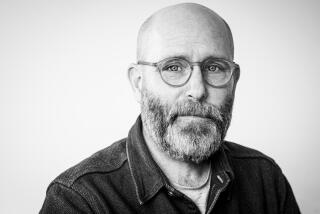Photo File: Charles Cushman’s vibrant view of midcentury America
- Share via
When Kodachrome color film was introduced in 1935, few professional photographers chose to use this new format, seeing it as a threat to a familiar point of view. Most recollections of the early half of the 20th century remain locked in familiar, stylized interpretations presented in black, white and gray tones by artists such as Walker Evans and Ben Shahn.
One amateur photographer, Charles Cushman, took advantage of this technology. Between 1938 and 1969, he traveled half a million miles, crisscrossing the country capturing people, landscapes and city streets with his Contax II A viewfinder camera. After his death in 1972, he bequeathed his collection of 14,500 color slides to his alma mater, Indiana University, where they went undiscovered until the late 1990s; 150 of those rarely seen photographs have been compiled in “The Day in Its Color: Charles Cushman’s Photographic Journey Through a Vanishing America” by Eric Sandweiss (Oxford University Press). The rainbow-hued lens through which he viewed midcentury America brings the past to life in vibrant, living color.
“These are new views of cities, small towns and the countryside from a time we haven’t seen before,” said Sandweiss, a professor of history at Indiana University.
Although Cushman left detailed notebooks that included dates, locations, subjects and shutter speeds, little personal information about him was revealed there.
Cushman was born in 1898 in Posey County, Ind., and after World War I moved to Chicago, where he worked in various business and financial positions including at Drewrys brewery. “He grew up close to the soil in Indiana, a small town boy who went on to make it in an urban, cosmopolitan world, but practical things still mattered to him,” Sandweiss noted. “I think his journeys were made up of felicitous moments.”
There are plenty of images of bathing beauties and majestic mountains, but Cushman’s background in finance seeps into his choice of subject matter too. “He was acutely aware of economic issues and how it was affecting the world around him,” said Sandweiss. “Taking pictures was his way of adding to that particular understanding of that world.”
A dilapidated building in Chicago, a freshly painted Golden Gate Bridge and a horse-pulled wagon next to a tractor are just a few examples of the ever-shifting world he observed.
Sandweiss believes Cushman made a deliberate choice not to become a professional photographer. “He chose to stand back from the world of professional artists, documentarians or writers like his first cousin, John Steinbeck, whose circles he traveled on the edge of. That’s not what he was about.”
Cushman married Steinbeck’s cousin, Jean Hamilton, in 1924 and forged a close relationship with her father, Joseph, a business mentor of sorts after the death of his own father. Joe Hamilton was also key in providing family history to Steinbeck that became the basis for his novel “East of Eden.” Distraught over the death of her father in 1943, Jean shot her husband and then turned the gun on herself. Both survived and continued their road trips until her death in 1969.
“His is a story shared across middle-class America,” said Sandweiss. “Boxes of slides are tumbling out of our closets. It’s the way we remember ourselves and our world.”
The entire collection of Cushman’s photographs can be viewed on the Indiana University website, webapp1.dlib.indiana.edu/cushman/index.jsp.
MORE:
CRITIC’S PICKS: Fall Arts Preview
TIMELINE: John Cage’s Los Angeles
More to Read
The biggest entertainment stories
Get our big stories about Hollywood, film, television, music, arts, culture and more right in your inbox as soon as they publish.
You may occasionally receive promotional content from the Los Angeles Times.










